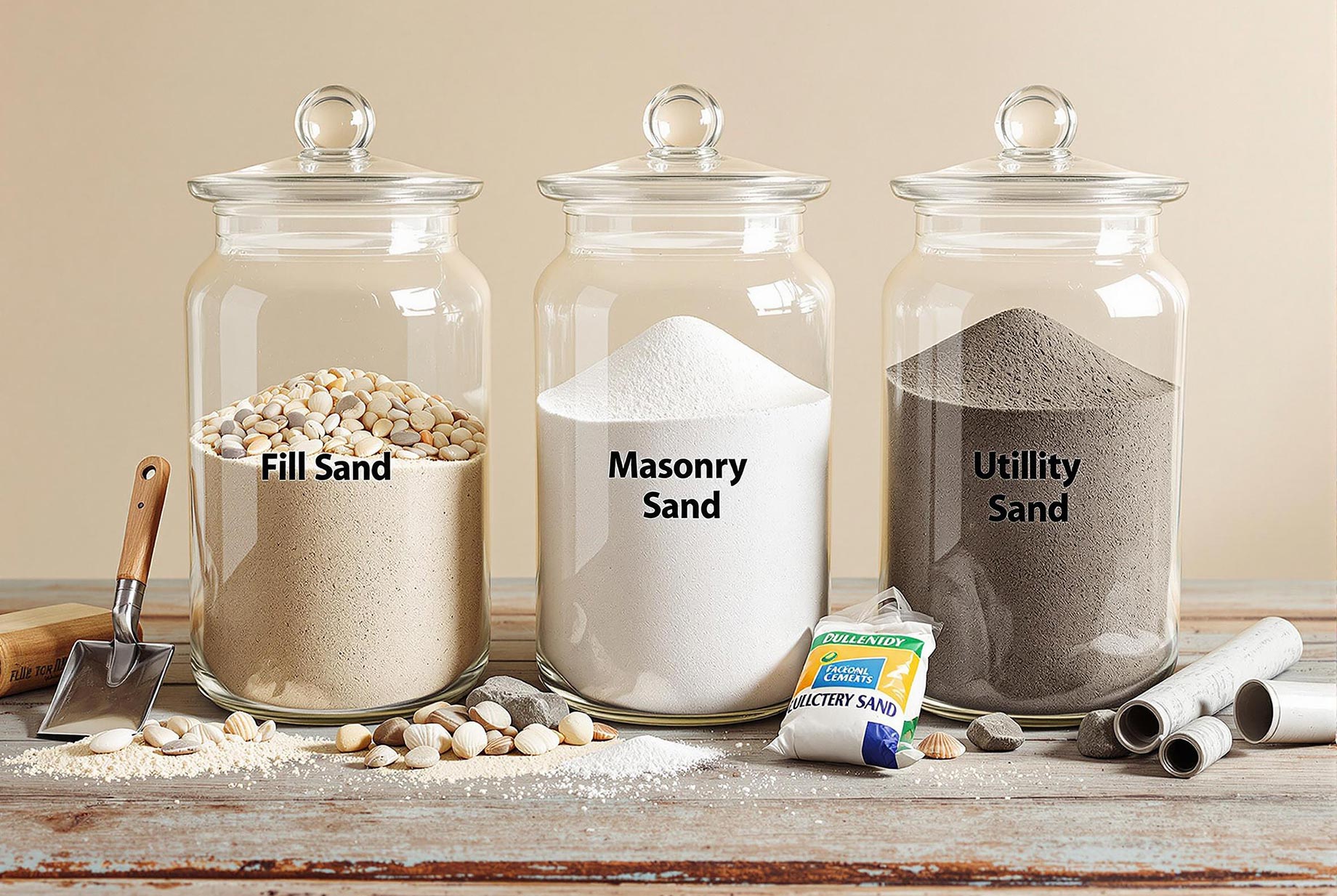
When starting an outdoor renovation or gardening project, knowing about landscape sand can make a big difference. Landscape sand helps improve soil, boosts drainage, and supports healthy plants. Choosing the right type of sand for your project will lead to stronger, more beautiful results.
Understanding Different Types of Landscape Sand
In the landscape industry, not all landscape sand is the same. Understanding the different types will guide you to the best choice for your needs.
Fill Sand
Fill sand gets its name because it’s mainly used to fill low spots and even out uneven areas in your yard. This coarse sand is mixed with gravel, providing the strength and stability needed for landscaping and construction. It creates a solid base that helps prevent shifting or sinking over time, making it ideal for many outdoor projects.
Because of its sturdy nature, fill sand is often used as the foundation for patios, walkways, and other hardscape features. It supports heavy materials like pavers or concrete, ensuring they stay level and last longer. Choosing the right fill sand helps your landscape stay strong and durable through all seasons.
Masonry Sand
Masonry sand has a finer texture, making it perfect for mixing with cement in construction projects. It plays a key role in creating mortar, especially for bricklaying, where a smooth and even finish is essential. This fine sand helps achieve clean lines and a polished look, improving the overall quality of the work.
Its consistent texture also adds strength to masonry projects, ensuring they stand the test of time. Using masonry sand reduces gaps and weak spots in mortar, helping to prevent cracks and damage. This makes it a reliable choice for building durable and attractive structures.
Utility Sand
Utility sand is a versatile material used in playgrounds and as a base layer under pavers. Its texture provides a safe and clean surface for children to play on, reducing the risk of injuries. Additionally, it ensures proper drainage, keeping paved areas dry and stable.
Compared to masonry sand, utility sand is coarser and less fine, making it ideal for projects that need strong support and good water flow. This coarser texture helps prevent shifting and settling, ensuring pathways and play areas stay level over time. Its durability is key to maintaining stability in various weather conditions.
How to Choose the Right Landscape Sand?
Choosing the right landscape sand may seem daunting, but a few straightforward guidelines can simplify the process. First, assess your project needs by deciding if the sand is for planting, leveling, or mixing with concrete. Understanding its role helps you select the right type that fits your specific landscaping goals.
Next, consider drainage needs since sandy soils drain well and are perfect for areas with standing water issues. Testing compatibility with your existing soil is also crucial to avoid harming plant health or drainage. Always choose high-quality sand free of contaminants, and remember that top dressing sand is a great option for leveling gardens or finishing lawns.
Transform Your Outdoor Space with the Right Landscape Sand
Understanding the different types of landscape sand and their uses allows you to create a healthier, more attractive garden or yard. By matching the sand to your project’s needs, you ensure better soil drainage, plant growth, and overall look. Selecting the appropriate landscape sand is a crucial step that can significantly enhance your outdoor space.